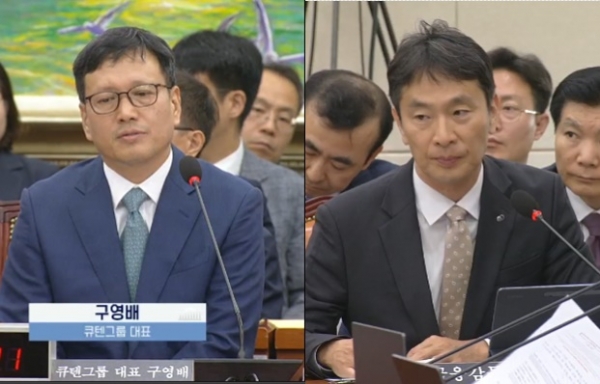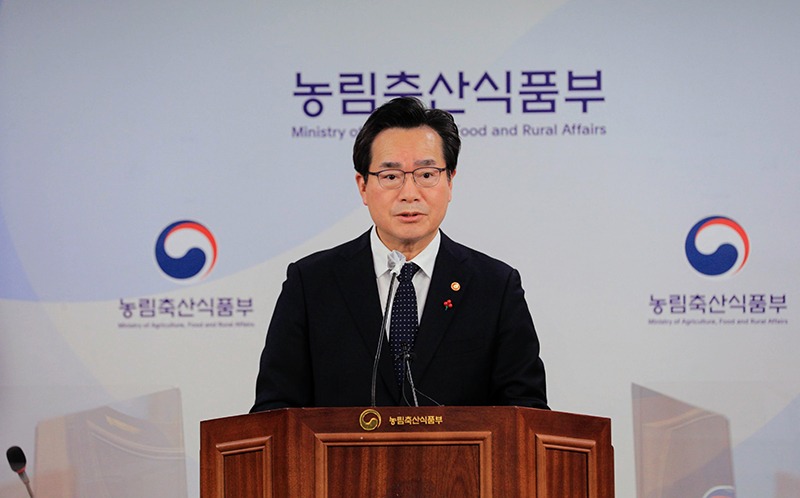[동아시아포럼] 미국 반도체 제재, 중국의 군사적 야망 억제제로 충분한가
첨단 반도체만 대상으로 한 중국 제재, 실효성 의문 중국, 비제재 대상 구형 칩 ‘머추어 노드’ 무기화 전략 머추어 노드로 제재 확대될 것인지 의견 분분
[동아시아포럼]은 EAST ASIA FORUM에서 전하는 동아시아 정책 동향을 담았습니다. EAST ASIA FORUM은 오스트레일리아 국립대학교(Australia National University) 크로퍼드 공공정책 학교(Crawford School of Public Policy) 산하의 공공정책과 관련된 정치, 경제, 비즈니스, 법률, 안보, 국제관계 및 사회에 대한 연구·분석 플랫폼입니다.
저희 폴리시코리아(The Policy Korea)와 영어 원문 공개 조건으로 콘텐츠 제휴가 진행 중입니다.
미 바이든 행정부의 대중국 반도체 제재가 중국의 군사적 야망을 억제하기에 충분하지 않다는 지적이 제기되고 있다. 현재 제재 대상은 첨단 반도체로 한정돼 있으며, 군사적 목적과 범용 활용도가 높은 ‘구형’ 반도체 칩은 비제재 대상이다. 이에 중국은 비제재 대상인 ‘머추어 노드(mature node·40나노미터 이상)’에 역량을 집중하며 새로운 무기화 전략을 구축하고 있다.

미국, 중국 군사력 억제 위해 반도체 제재 감행
바이든 정부는 지난해 10월 7일 글로벌 기술 경쟁에서 주도권을 확보하기 위해 중국의 반도체 제재를 포함한 수출 규제를 발표한 데 이어 지난 9일엔 인공지능(AI), 첨단 반도체, 양자컴퓨터와 관련된 중국 기업에 대한 투자 제재를 발표했다. 발표 당시 미 정부는 중국이 미국에서 보유한 첨단 기술을 활용해 군사적 무기를 강화하는 것을 억제하기 위함이라 밝혔다.
미국의 제재는 군사적 시각에서 크게 두 가지 목적으로 해석된다. 첫 번째는 데이터 집약적 기술이 필요한 AI, 슈퍼컴퓨터, 그리고 극초음속 미사일에 필요한 첨단 반도체에 대한 중국의 접근을 직접적으로 제한하기 위함이다.
두 번째는 첨단 반도체 설계에 필요한 전자설계자동화(EDA) 소프트웨어를 포함해 미국에서 개발된 반도체 설계, 제조 설비에 대한 사용 및 접근을 제한함으로써 중국의 반도체 및 첨단 칩셋 개발 능력을 하락시키려는 목적이다.
미국 조롱하는 중국의 제재 우회
미국의 반도체 제재 조치 후 약 1년이 지난 지금, 실효성 부족으로 제재를 확대해야 한다는 지적이 나온다. 30일 크리스티나 나이트(Christina Knight) 스탠포드대학교 연구원은 현재의 제재로는 당초 미국이 계획한 목표을 달성하기 힘들 수 있다며 제재 확대 의견을 피력했다.
이어 중국 칭화대학교(Tsinghua University) 소속 엔지니어 60명 이상과 소통한 결과, 미국의 EDA 사용 제한을 피하기 위한 소프트웨어 우회 사용 방법이 이미 널리 공유돼 있다고 주장했다. 아울러 현재의 제재는 첨단 노드칩를 대상으로 할 뿐 머추어 노드는 규제할 수 없다고 역설했다. 머추어 노드는 물리적 크기에 비해 데이터 처리 능력 밀도가 낮은 칩을 말한다.
칭화대 집적회로학원(반도체 대학원)에서 박사 과정을 밟고 있는 익명의 학생도 크리스티나의 의견에 동조했다. 그는 “미국 제재가 ‘군사적 사용’ 측면에선 비효율적”이라며 “중국 인민해방군(PLA)의 무력화엔 부족한 조치”라고 설명했다.
현재 집적회로학원에 재학 중인 학생들은 백 게이트 서버 또는 별도 라이센스를 통해 미국 EDA 기업 케이던스(Cadence), 시놉시스(Synopsys) 등의 소프트웨어를 이용하고 있으며, 설계된 칩셋을 대만 반도체 제조사에 의뢰하는 형태로 미 제재를 우회하고 있다.
칭화대 집적회로학원은 최고의 반도체 인재를 양성하기 위해 2020년 중국 정부가 설립한 대학원이다. 집적회로학원에서 진행되는 연구는 향후 중국의 민-군 융합을 위한 이중 기술이나 직접적인 군사 목적으로 이용될 수 있다. 이는 항법기술, AI, 공대공 미사일 등 첨단 반도체와 관련된 국방 연구 분야를 의미한다. 호주 전략정책연구소가 칭화대학교를 ‘광범위한 군사 연구’, ‘일급 기밀 허가를 요하는 군사 연구’, ‘직접적인 국방 자금 지원’ 등의 이유로 ‘고위험’ 대학으로 분류한 것도 이 때문이다.
비제재 대상 ‘머추어 노드’ 무기화 시도, 제재 효과 없나
미국은 머추어 노드 칩 산업에 대해선 별다른 제재를 하지 않고 있다. 머추어 노드와 같은 ‘구형’ 반도체까지의 광범위한 제재는 인플레이션 증가 요인이 될 수 있다는 이유에서다. 게다가 자칫 중국산 구형 반도체를 이용하는 비중국계 기업까지 위기가 확산될 수 있는 만큼 신중을 기하는 모습이다.
대중국 제재의 가장 큰 패착으로 지목되는 것도 이 부분이다. 군사적 무기에 사용되는 반도체는 구형 반도체 칩셋인 머추어 노드로도 충분하기 때문이다. 익명의 칭화대학교 관계자는 현재 미사일, 우주 기술, 초음속 비행기에 사용되는 ’28나노미터’ 이상의 머추어 노드 관련 애플리케이션에 역량을 집중하고 있다며, 고대역폭 메모리나 첨단 반도체가 필요한 AI, 드론 원격 조정이 중국 인민해방군에 적용되는 것은 아직 먼일이라고 답했다. 실제로 미국의 유명한 씽크탱크인 RAND연구소가 지난해 발간한 보고서에 따르면 우주 기술, 무선 통신, 레이저 감지, 에지 컴퓨팅, 통합 실리콘 포토닉스와 같은 군사 기술 개발은 대부분 머추어 노드로 운용 중이다.
중국은 미국의 반도체 제재에 맞서 오히려 군사적 활용도가 높은 머추어 노드에 주력하고 있다. 칭화대학교를 비롯한 중국 반도체 엔지니어들도 이미 머추어 노드의 영향력에 주목하고 기술 개발에 나서고 있다. 중국 로직 칩셋/반도체 제조사 인터내셔널 코퍼레이션도 2년 안에 상하이, 선전, 베이징, 텐진에 28나노미터 머추어 노드 생산 시설을 오픈할 예정이라고 발표했다. 이와 관련해 일부 전략 전문가들은 중국이 머추어 노드 시장 장악력을 보유하게 되면, 지금과는 반대로 구형 반도체 시장에 미국의 접근을 제한할 수 있는 협상 카드를 쥘 수 있다고 경고한다.
반면 미국의 제재가 전혀 소용없는 것은 아니라는 의견도 있다. 중국은 미국의 반도체 제재에 대항해 반도체 자립 기조를 운영하고 있으며, 이에 따라 중국 기업 역시 자체 EDA 소프트웨어를 잇달아 출시했다. 하지만 칭화대 집적회로학원 엔지니어들의 반응은 회의적이다. 반도체 칩셋은 철저히 맞춤형인 데다 전체 프로세스와 연동돼야 하는 만큼, 새로운 소프트웨어를 적용하는 것이 어렵다는 것이다. 칭화대학교의 한 학생은 “미국이 EDA 사용을 전면 제한한다면 실명에 가까운 타격을 입을 것”이라고 우려했다.
반도체 추가 제재, 미국의 선택은?
현대 사회에 있어 반도체는 전체 산업을 견인하는 엔진과도 같다. 이 엔진의 글로벌 생산 네트워크를 통제하는 국가는 지리적 한계를 넘어서 전례 없는 지정학적 힘을 갖게 될 것으로 전망된다.
지난해 10월부터 진행돼 온 대중국 수출 및 투자 제재는 중국의 군사적 야욕을 막기엔 역부족이었다. 그렇다고 해서 군사적 목적뿐만 아니라 민간에서도 광범위하게 사용되는 머추어 노드까지 제재할 경우 글로벌 인플레이션의 단초가 될 수 있기에 무조건적인 제재 확대 또한 지양해야 한다. 허나 머추어 노드라는 무기가 중국에 넘어가는 것 역시 경계해야 한다.
그간 중국이 보여준 역내 침략과 불공정한 글로벌 시장 관행을 고려할 때 반도체 시장까지 ‘중화’되는 것은 범태평양 지역은 물론 전 세계적으로 좋은 징조가 아니다. 미중 기술 경쟁의 전쟁터인 반도체 시장. EDA 사용 제한이란 칼자루를 쥔 미국은 글로벌 인플레이션 리스크와 구형 반도체 시장 점유율 사이의 딜레마에 빠진 채 머추어 노드를 예의주시하고 있다.
US chip sanctions may not be enough to deter China’s military ambitions
Semiconductors comprise the battleground for US–China technology competition. On 7 October 2022, the Biden administration released a set of export controls to ensure the United States maintains ‘as large a lead as possible’ in this emerging technology race.

Semiconductors comprise the battleground for US–China technology competition. On 7 October 2022, the Biden administration released a set of export controls to ensure the United States maintains ‘as large a lead as possible’ in this emerging technology race.
The restrictions attempt to constrain Beijing’s emerging technology development in two ways. First, they limit China’s access to advanced semiconductors necessary for data-intensive artificial intelligence (AI) models, supercomputers and hypersonic missiles. Second, the measures curtail China’s ability to create these cutting-edge chips by preventing China from using US-built semiconductor design and manufacturing equipment, including the electronic design automation (EDA) software required to design advanced semiconductors.
But engineers at China’s top technology university — Tsinghua University — indicate that the 7 October export controls may not fully accomplish Washington’s objectives and that the sanctions’ scope should expand.
Conversations with over 60 engineers on Tsinghua’s campus reveal the prevalence of continuous EDA software limitation workarounds and the downsides of only targeting the most advanced-node chips, as opposed to so-called ‘mature node’ chips that offer less density of processing power for a given physical size.
Several students at the School of Integrated Circuits at Tsinghua (a ‘chip college’ established in 2020 to foster China’s top semiconductor talent) noted that they can easily circumvent EDA restrictions. Despite sanctions, students use Cadence and Synopsys — two of the most popular EDA providers from the United States — through backgate channels or special licenses. They then send advanced chips they design with EDA software to the Taiwan Semiconductor Manufacturing Company to manufacture — achieving the entire process Washington aims to restrict.
While Chinese firms have released their own EDA software, most students still rely on US technology. One student explained that ‘it’s custom’ and that ‘we can’t just start using new software, the entire process is connected. No one is willing to use it’. Another student noted feeling ‘panicked under the pressure’ of future sanctions and worried that ‘if the United States one day decides to stop letting us use EDA software, we’ll go blind. I’m terrified about that’.
Tsinghua engineers that access US EDA software may conduct dual-use or military end-use research for the PRC’s military-civil fusion initiative. The Australian Strategic Policy Institute ranked Tsinghua a ‘high-risk’ university for its ‘range of military research’, top-secret clearance for classified defence research and direct military funding. Tsinghua’s defence research sectors include navigation technology, AI, and air-to-air missiles — all technologies that rely on advanced semiconductors.
Even if Washington could successfully limit Beijing’s cutting-edge semiconductor development, this restriction alone would not be enough. Most military technology, including cutting-edge space technology, relies on less sophisticated chips that can handle extreme environmental changes and temperature shifts. Degrading China’s national security and defence industries requires limiting these ‘mature node’ chips.
A PhD student set to graduate in 2024 and ‘manage military technology development’ confirmed the current sanctions’ inability to enfeeble the People’s Liberation Army (PLA). He describes the October chip ban as ‘ineffective in terms of military use’.
While the PLA relies on foreign-produced chips for cutting-edge research, the PhD student noted that this research is secondary. He said, ‘we could use AI for drones and coordination, but that’s more like 15–20 years down the line’, and that ‘right now, we are more focussed on the applications that need chips 28nm and above like missiles, space and jets’. A 2022 RAND Report confirms that military technology development — such as space technology, radio frequency communication, laser-based sensing, edge computing, and integrated silicon photonics — mostly relies on mature chips.
According to the Center for Strategic and International Studies, Washington did not target China’s mature chip (16nm and above) industry because this could have exacerbated inflation and angered foreign firms reliant on China’s older semiconductors. But the United States may regret this decision in the long term. Not only has this choice been a blessing for PLA technology development, but by targeting cutting-edge and not older semiconductors, Washington has stimulated Beijing’s mature chip industry.
This lopsided restriction increases China’s ability to dominate the global mature node market. China’s premier logic chip producer — Semiconductor Manufacturing International Corporation — plans to open new 28nm node production facilities in Shanghai, Shenzhen, Beijing and Tianjin over the next two years. Chinese strategists assert that mature node dominance provides Beijing with a future ‘bargaining position’ to limit US access to older semiconductors. Many Tsinghua engineers also noted China’s mature node market potential and 28nm chips’ role in China’s overall technology development.
Tsinghua’s robust network of top-tier engineers provides unique insight into the effects of US semiconductor sanctions. Yet uncertainty still exists on whether engineers can design cutting-edge chips on par with foreign firms. As technology rapidly advances, questions emerge regarding mature nodes’ ability to sustain Chinese military development, the future of China’s domestic semiconductor industry, and the role of US sanctions in moulding this environment.
If the United States intends to halt Chinese President Xi Jinping’s commitment to the autarkic mastery of critical technologies, the October 2022 export ban will not suffice. Washington’s ‘scalpel’ should not expand to a sledgehammer. But the United States should increase EDA software restrictions and recalculate the perceived trade-off between mature-node chip controls and inflation risks.
Semiconductors propel the entire technology industry. The nation that controls the global production network of this critical tool holds unprecedented geopolitical power. Given the PLA’s aggression in the region and Beijing’s unfair market practices, China occupying this position does not bode well for the Indo-Pacific — or the world.
원문의 저자인 크리스티나 나이트(Christina Knight)는 미국 스탠포드대학교(Stanford University)에서 심볼릭 시스템 인공지능 학사, 철학 석사, 글로벌 문제 석사 학위를 받은 연구원입니다.




























